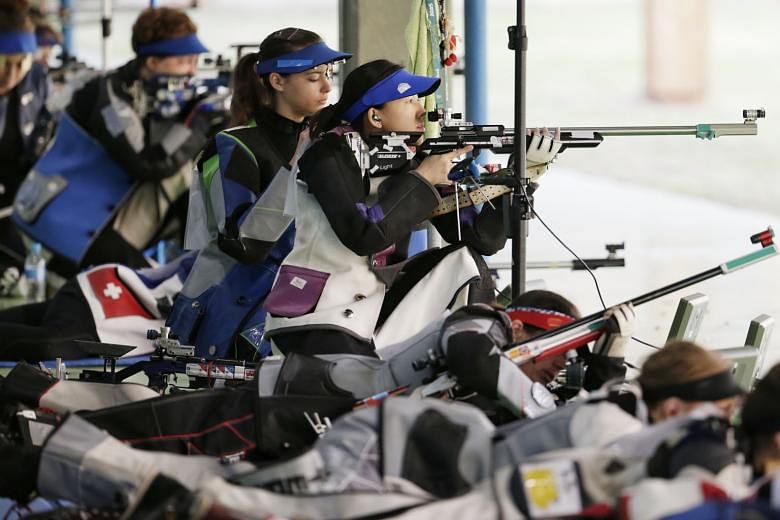National shooter Jasmine Ser is gunning to show that anything the men can do, the women can too.
The International Shooting Sport Federation (ISSF) announced on Monday a slew of rule changes that will take effect from Jan 1. Among them is having both men and women take the same number of shots during competitions.
For example, the women's rifle three-positions event qualification phase currently requires an athlete to take 20 shots in each position - kneeling, prone and standing - within 1 hour and 45 minutes.
This will be changed to 40 shots in each position, within 2hr 45min (for electronic targets) from next year, the same as the men's event.
It means Ser and her female team-mates will need more physical and mental conditioning for the increase in number of shots and competition period. But she remained unfazed ahead of her 50m air rifle three-positions title defence at the Gold Coast Commonwealth Games in April.
"If they (ISSF) think we (women) are up for more shots, we will be up for the challenge," said the 27-year-old, who is also the SEA Games champion in this event.
She added that Singapore's shooters are mentally "resilient" enough to adapt to the changes.
Reigning SEA Games 10m air rifle champion Martina Veloso, 18, welcomed the changes as she believes the additional shots in the 50m event can work in her favour.
"With 20 shots, we really have to make sure that we cannot afford to make mistakes whereas in the 40-shot format (errors) can be compensated with more shots," she said. "We don't have to be that stressed compared to 20 shots."
Qualifiers for the women's 10m air rifle and air pistol events will increase from 40 shots to 60 shots, while the 25m pistol women event will continue as a 60-shot event.
Commonwealth Games 10m air pistol gold medallist Teo Shun Xie, however, does not think that the longer format will necessarily be more forgiving of errors.
"Everyone is so close during competitions and a bad shot can still make you tumble from the top to the bottom, so you'd need to keep your focus for the entire 60 shots," said the 29-year-old of the 10m air pistol event."
Shooting's global governing body has introduced other rule changes in recent years. Since 2013, qualification scores are no longer carried over to both the men's and women's finals, which are now conducted in an elimination format.
As such, Ser feels that the latest changes are unlikely to affect who will prevail in the final.
In response to queries by The Straits Times, an ISSF spokesman said of the new rules which will extend till 2020: "This decision reflects the ISSF's commitment to the IOC (International Olympic Committee) Agenda 2020 goal of gender equality in sports."
Shooting is not the only sport that has been affected by the IOC's Gender Equality Review Project.
The 2020 Tokyo Games are set to see 48.8 per cent of participation by women - the most gender balanced edition in Olympic history - following the introduction of new events.
There will be mixed team events in archery and judo; a 4x400m mixed relay in athletics, a 4x100m mixed medley relay in swimming, table tennis mixed doubles and a mixed team relay in triathlon.


